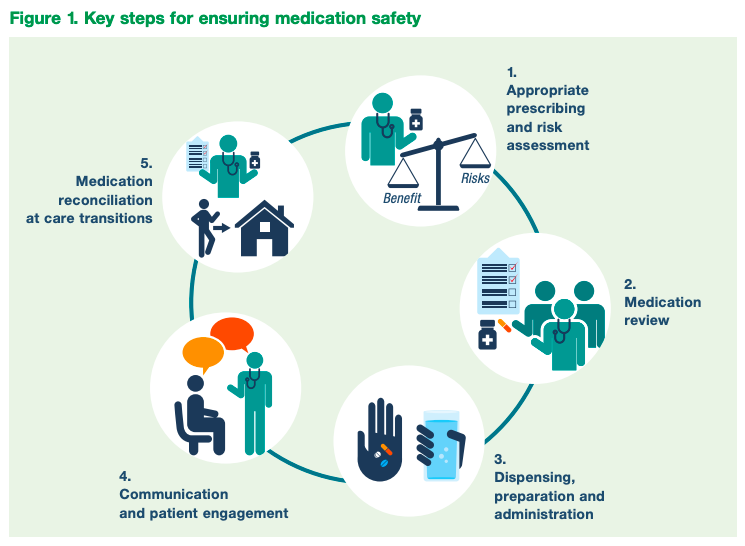
World Patient Safety Day: WHO calls for urgent action to reduce patient harm
 For Doctors, the first and foremost area to be concerned about is their patient’s safety. As a coin has two sides, while concerns are being raised about increasing incidents of violence against doctors, the World Health Organisation points out to the other side of the picture by warning us that more than 138 million patients are harmed every year by doctors’ errors.
For Doctors, the first and foremost area to be concerned about is their patient’s safety. As a coin has two sides, while concerns are being raised about increasing incidents of violence against doctors, the World Health Organisation points out to the other side of the picture by warning us that more than 138 million patients are harmed every year by doctors’ errors.
WHO celebrates the first “World Patient Safety Day” on September 17, with which it aims to raise awareness on this ongoing tragedy. The purpose of World Patient Safety Day is to promote patient safety by increasing public awareness and engagement, enhancing global understanding and working towards global solidarity and action. It said that globally, at least five patients die every minute because of unsafe care such as an error in diagnosis, errors in medicine prescriptions and treatments, and the inappropriate use of drugs.
Patient Safety

Patient Safety aims to prevent and reduce risks, errors and harm that occurs to patients during the provision of health care. Patient safety is fundamental to the quality of essential health services.
According to WHO, clear policies, leadership capacity, data to drive safety improvements, skilled health care professionals and effective involvement of patients in their care are needed to ensure successful implementation of patient safety strategies.
The increasing complexity in health care settings that make humans more prone to mistakes. For example, a wrong prescription could be a result of lack of standard procedures for storage of medications that look alike, poor communication between different providers, lack of verification before medication administration or lack of involvement of patients in their care. Let us go through some facts related to patient safety.
1. One in every ten patients is harmed while receiving hospital care.
2. The occurrence of adverse events due to unsafe care is likely one of the ten leading causes of death and disability across the world.
3. Four out of ten patients are harmed in primary and outpatient healthcare.
4. At least one out of seven Canadian dollars is spent treating the effects of patient harm in hospital care.
5. Investment in patient safety can lead to significant financial savings.
6. Unsafe medication practices and errors harm millions of patients and cost billions of US Dollars every year.
7. Inaccurate or delayed diagnosis is the most common causes of patient harm and affects millions of patients.
8. Hospital infection affects up to 10 out of every 100 hospitalized patients.
9. More than 1 million patients die annually from complications due to surgery.
10. Medical exposure to radiation is a public health and patient safety concern.
Apart from the above facts, many medical practices and risks associated with health care are emerging as major challenges for patient safety and contribute significantly to the burden of harm due to unsafe care. Here are some examples:
*Medication errors
*Healthcare-associated infections
*Unsafe surgical care procedures
*Unsafe injection practices
*Diagnostic errors
*Unsafe transfusion practices
*Radiation errors
*Sepsis
*Venous thromboembolism – vein clots
Safety of patients is important for strengthening the health care systems and making progress towards effective universal health coverage. It is also important to recognize the impact of patient safety in reducing costs related to patient harm and improving efficiency in health care systems. The World Health Assembly (WHA) adopted a resolution on Patient Safety which endorsed the establishment of World Patient Safety Day to be observed annually by the Member States on 17 September. The WHO Patient Safety and Risk Management unit has been instrumental in advancing and shaping the patient safety agenda globally by focusing on driving improvements through the following key strategic areas.
- Providing global leadership and fostering collaboration between the Member States and relevant stakeholders
- Setting global priorities for action
- Developing guidelines and tools
- Providing technical support and building capacity of Member States
- Engaging patients and families for safer health care
- Monitoring improvements in patient safety
- Researching the area
Along with that, WHO is also presenting a set of three technical reports –
*Medication safety in high-risk situations
*Medication safety in polypharmacy, and
*Medication safety in transitions of care – to facilitate early priority actions and planning to address each of these areas.
Dr Tedros Adhanom Ghebreyesus, WHO Director-General said that “we need a patient safety culture that promotes partnership with patients, encourages reporting and learning from errors, and creates a blame-free environment where health workers are empowered and trained to reduce errors.” The ‘Patient Safety Day’, in its first year will light up with the colour orange in several monuments and healthcare facilities worldwide. The pyramids of Cairo, Kuala Lumpur Tower and the Eugenio Espejo Convention Center in Quito will be among the places tinted orange to highlight the occasion, established during the World Health Assembly last May.
Source: WHO, India Today
Detailed Info: https://www.who.int/features/factfiles/patient_safety/patient-safety-fact-file.pdf?ua=1